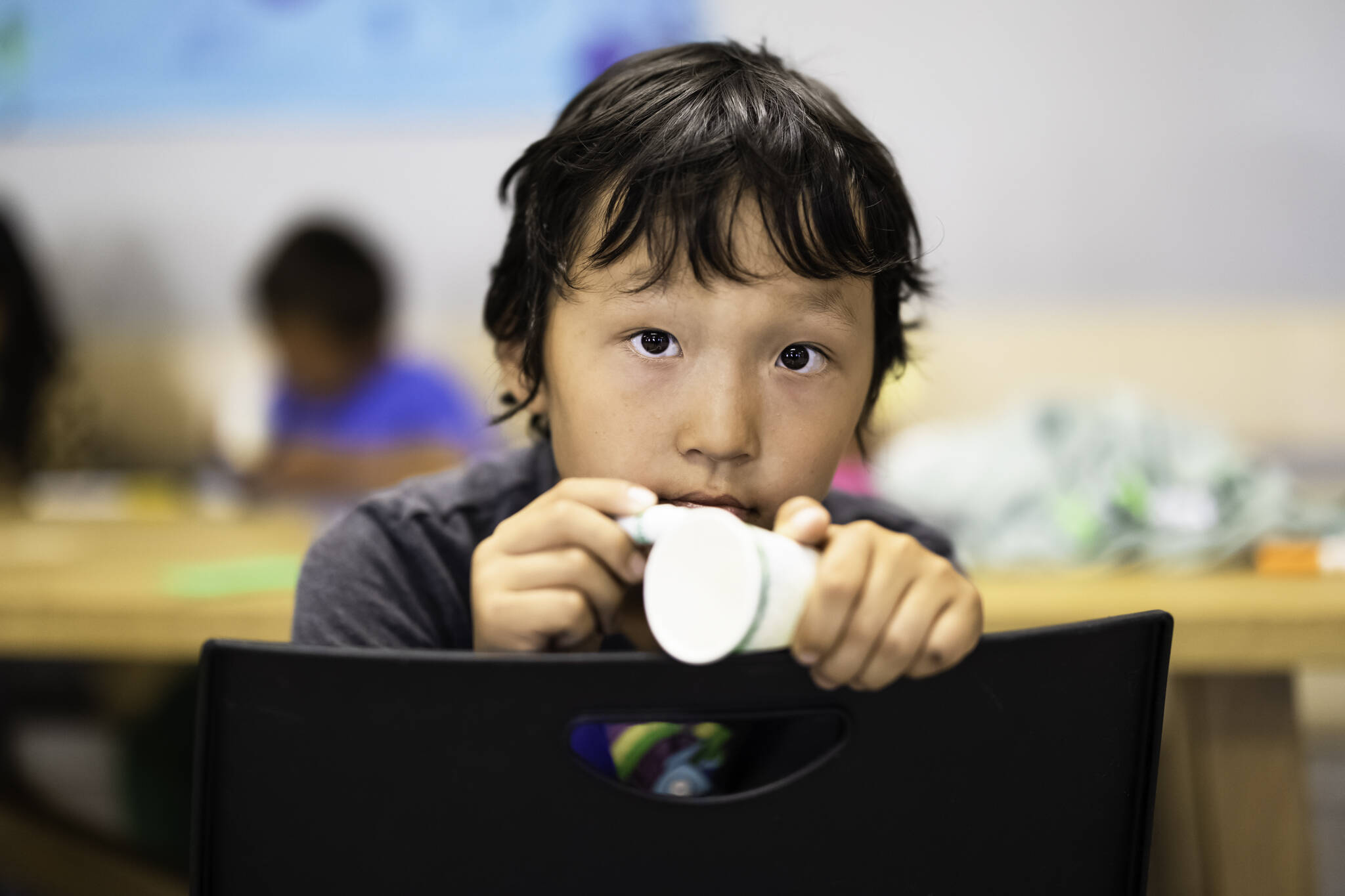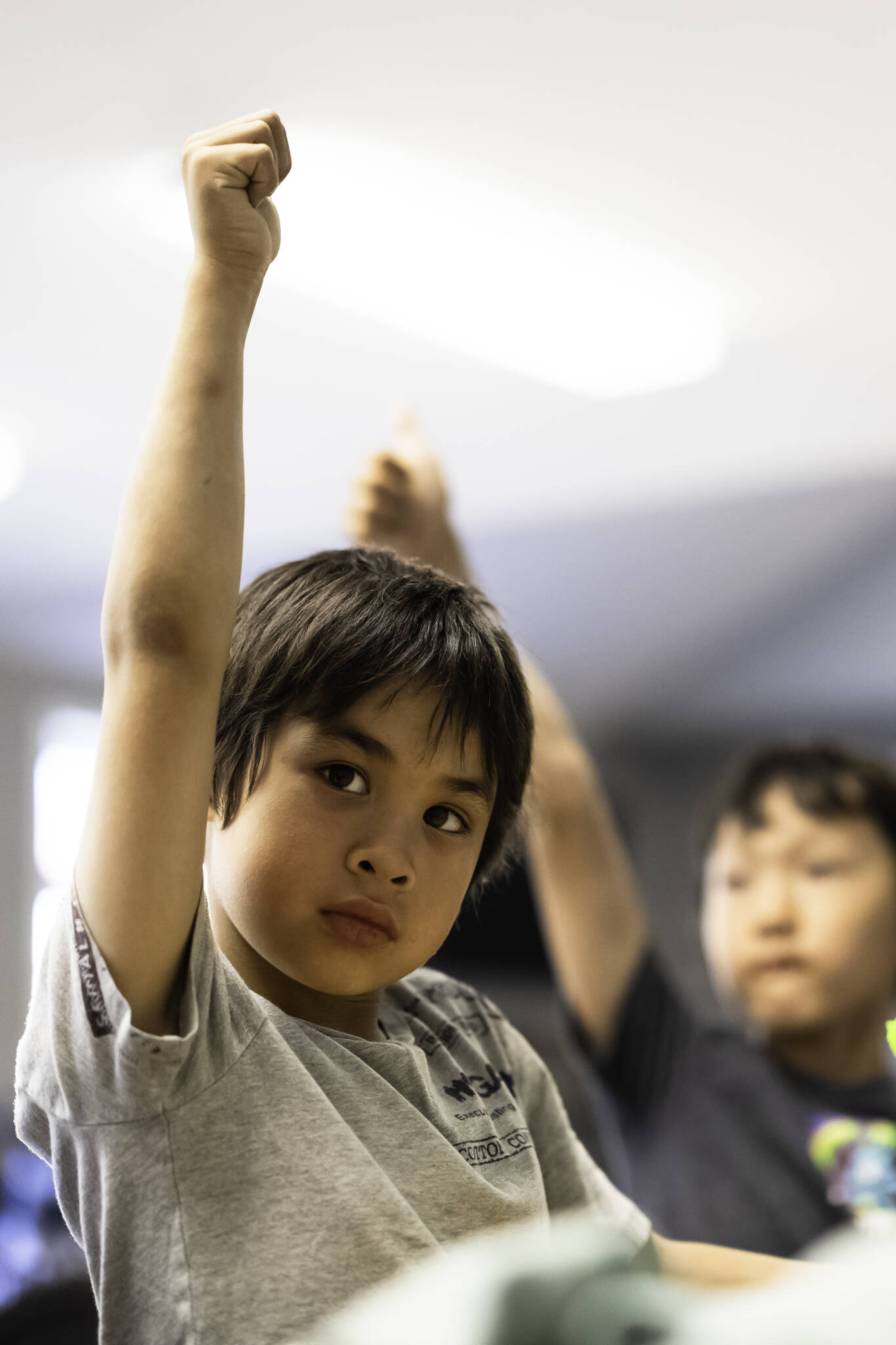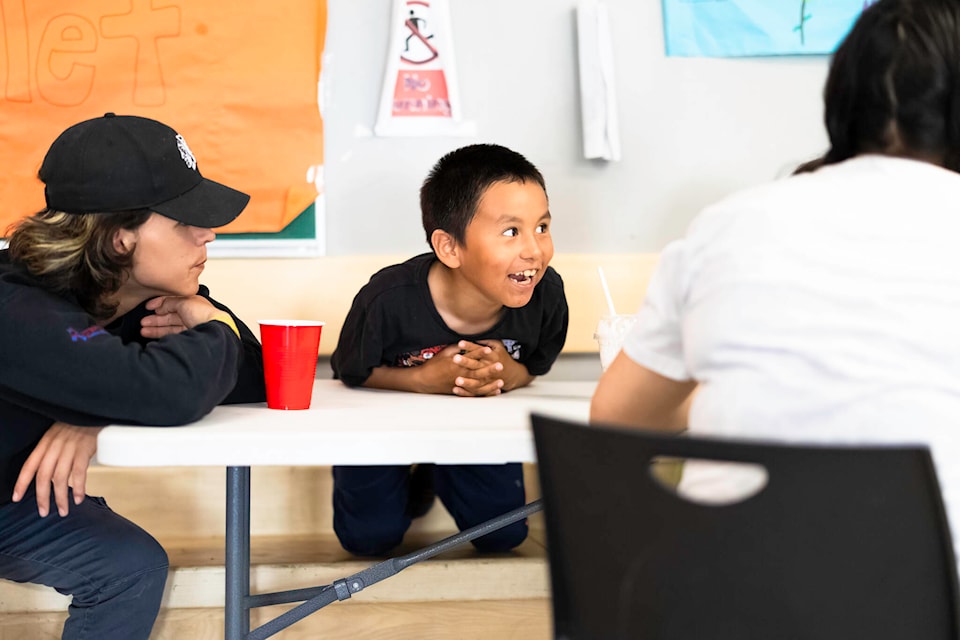Actua science camps have become a staple in the North, as teams of instructors work their way around the territory engaging youth in a variety of classroom projects and activities.
In Rankin Inlet, Actua connected with the summer camp students to teach a week-long course with a new subject every day.
The youth, ages five to nine, learned about water, the bridge between art and science, safety on the internet, aerodynamics and then robots.
“It varies week to week depending on the group of kids that you have,” about what youth like to learn the most, said Patricia Kennedy, outreach instructor.
“Sometimes we get kids that are really into the art-based activities, and they find those really interesting. Sometimes we get a group where kids are really into coding and so we’ll do a lot of coding.”
She comes from a computer science background, so her favourite courses are the ones that deal with that subject; meanwhile, co-instructor Edie Levine-Barnoff comes from the biology world and loves activities relating to living creatures.
The last day of the camp in Rankin Inlet involved a lesson about how bees pollinate and direct others to flowers, where students created their own little ‘pollinator’ robots and powered them up with a tablet to perform pollinating dances on the floor.
Kennedy said the camps are important because they highlight STEM (science, technology, engineering and math) in the community – something that intersects with Indigenous knowledge, she said.
“There are so many connections, so that’s also something we like to explore in those camps and show those links,” said Kennedy.
For Levine-Barnoff, her highlight of the Rankin Inlet camp was seeing a child run up to their parent afterward yelling, “We just did science!”
“They were really happy about it and the parent was like, ‘Oh that’s amazing,’” recalled Levine-Barnoff. “That was a really nice moment to hear, to see the kids outside of the activities getting really excited about what we’re doing and science in general.”
ᐊᒃᓱᐊ ᖃᐅᔨᓴᖅᑐᓕᕆᔩᑦ ᐱᓕᕆᖃᑎᖃᕆᐊᖅᑐᓲᖑᕗᑦ ᐅᑭᐅᖅᑕᖅᑐᒥᐅᓂᒃ, ᐃᓕᓐᓂᐊᖅᑎᑦᑎᔨᖏᑦ ᐳᓚᕋᕈᓘᔭᖅᖢᑎᒃ ᓄᓇᓕᖕᓄᑦ ᓄᓇᕗᒥ ᒪᒃᑯᒃᑐᓂ ᐃᓕᓐᓂᐊᖅᑎᑦᑎᓪᓗᑎᒃ ᖃᐅᔨᓴᖅᑐᓕᕆᓂᕐᒥᑦ.
ᑲᖏᖅᖠᓂᕐᒥ, ᐊᒃᓱᐊᑯᑦ ᐱᓕᕆᑎᑦᑎᓚᐅᖅᐳᑦ ᐊᐅᔭᐅᔪᒥ ᐃᓕᓐᓂᐊᖅᑎᑦᑎᕙᒃᖢᑎᒃ ᖃᐅᑕᒪᑦ ᐊᔨᒌᖏᑦᑐᓂ.
ᒪᒃᑯᒃᑐᑦ, ᐊᕌᒍᓕᑦ 5-ᒥ 9-ᒧ ᐃᓕᑦᑎᓪᓗᑎᒃ ᐃᒪᐅᑉ ᐱᖁᓯᖓᓂᒃ, ᖃᐅᔨᓴᖅᑐᓕᕆᓂᕐᒧᑦ ᐊᖁᑎᒪ ᖃᕋᓴᐅᔭᑦ ᐊᑐᑦᑎᐊᕐᓂᖅ,
ᐅᓗᐸᓂᓪᓗ.
ᒪᓕᒃᐸᒃᖢᓂ ᐱᓇᓱᐊᕈᓯᖅ ᐱᔾᔪᑎᒋᓪᓗᒍ ᐊᒻᒪᓗ ᐅᓄᕐᓂᖏᑦ ᒪᓕᒃᖢᒋᑦ ᓄᑕᖃᑦ,’ ᒪᒃᑯᒃᑐᑦ ᖃᐅᔨᔪᒪᔭᖏᓐᓂ, ᐅᖃᖅᐳᖅ
ᐸᑐᕆᓴ ᑲᓇᑎ, ᐱᓕᕆᐊᒃᓴᓂᒃ ᐃᓕᓴᐃᔨ.
‘ᐃᓛᓐᓂᒃᑯᑦ ᓄᑕᖃᓂᒃ ᑕᑯᕙᒃᑐᒍᑦ ᑎᑎᕋᐅᔭᕈᒻᒪᓂᒃ, ᐱᑯᓇᖅᐸᒃᐳᑦ. ᐃᓚᖏᓪᓗ ᖃᕋᓴᐅᔭᓕᕆᔪᒪᔪᑦ. ᓇᓚᐅᑦᑕᕈᓘᔭᕐᓂᖅ.’
ᖃᕋᓴᐅᔭᓕᕆᓂᕐᒥ ᖃᐅᔨᒪᒐᒥ, ᐱᔾᔪᑎᒋᓪᓗᒍ ᖁᕕᐊᒋᔭᖃᖅᐳᖅ ᖃᕋᓴᐅᔭᓕᕆᓂᖅ. ᐱᖃᑖ ᐃᑎ ᓚᕕᓐ-ᐸᐅᓇᕝ ᖃᐅᔨᓴᕐᓂᖅ ᓄᓇᒦᑐᓂᒃ ᐱᖑᐊᕈᓘᔭᕈᒻᒪᐅᓪᓗᓂᓗ ᓄᓇᒥᐅᑕᒥᖓᖅᑐᑦ ᐱᔪᑎᒋᓪᓗᒍ.
ᐅᓪᓗᖅ ᑭᖑᓪᓕᖅᐸᖅ ᐱᓕᕆᑎᑕᐅᔪᑦ ᑲᖏᖅᖠᓂᕐᓂ ᐃᓕᓂᐊᖅᑎᑕᐅᓂᖅ ᖃᓄᖅ ᐃᒍᑦᑕᖅ ᓴᐃᒥᖅᓴᐃᓱᖑᖕᒪᖓᑕ ᐱᕈᖅᓯᐊᓂᒃ, ᐃᓕᓐᓂᐊᖅᑐᑦ ᐊᕿᒃᓯᓪᓗᑎᒃ ᓴᐃᒻᒥᖅᓴᐃᔨᖑᐊᕐᒥᒃ.
ᑲᓇᑎ ᐅᖃᖅᐳᖅ ᐱᓕᕆᑎᑦᑎᓂᖅ ᐱᒻᒪᕆᐅᓂᖓᓂᒃ ᓱᖃᐃᒻᒪ ᐱᓕᕆᑎᑦᑎᓲᖑᒐᒥᒃ ᖃᐅᔨᓴᖅᑐᓕᕆᓂᕐᒧᑦ ᖃᐅᔨᒪᔭᐅᔭᕆᐊᓕᖕᓂ. (ᖃᐅᔨᓴᖅᑐᓕᕆᓂᖅ, ᖃᕆᓴᐅᔭᒨᖅᑐᑦ, ᐊᐅᓚᐅᑎᑦ ᐊᒻᒪᓗ ᓇᐃᓴᐅᑎᓕᕆᓂᖅ ᓄᓇᓂᖕᓄᑦ - ᐱᓕᕆᖃᑎᒌᒍᓐᓇᖅᑐᒃᑯᑦ ᖃᓄᑐᐃᓐᓇᖅ ᐱᖁᓯᓂᒃ, ᐅᖃᖅᐳᖅ.
‘ᐅᓄᖅᑐᑯᑦ ᑲᑎᖓᔪᓐᓇᖅᑐᖃᖅᑐᖅ, ᑕᑯᔪᒪᕙᒃᐸᕗᑦ ᐱᓕᕆᕈᓘᔭᖅᑎᑎᑎᓗᑕ ᑕᑯᓗᒋᑦ ᑲᑎᑦᑐᓐᓇᖅᑐᑦ.’ ᑲᓇᑎ ᐅᖃᖅᐳᖅ.
ᓚᕕᓐ ᐸᐅᓇᕝᒧ, ᐱᑯᒋᓚᐅᖅᑕᖓ ᓄᑕᖃᖅ ᐊᖓᔪᖄᒥᓄᑦ ᐅᓪᓚᒃᑐᑦ ᑐᖅᖢᓛᖅᖢᑎᒃ, ᖃᐅᔨᓴᖅᑐᓕᕆᓂᓕᕆᓵᖅᑐᒍᑦ!’
ᖁᕕᐊᓱᖃᑎᒋᒃᖢᑎᒃ ᕿᑐᖓᕆᒃ ᐊᒐᔪᖅᖄᒋᒃ, ‘ᐱᒃᑯᓇᖅ’ ᐅᖃᖅᐳᖅ ᓚᕕᒃ-ᐸᐅᓇᕝ. ‘ᑐᓴᕐᓂᖅᑐᖅ ᑐᓵᓪᓗᒍ, ᖁᕕᐊᓱᒃᑐᓪᓗ ᓄᑕᖅᑕᑦ ᑕᑯᓪᓗᒋᑦ ᓯᓚᒥ ᐱᓕᕆᑎᑕᐅᕈᓘᔭᖅᑐᑦ, ᖁᕕᐊᓱᕈᓘᔭᖅᖢᑎᒃ ᐊᑐᕐᓂᐊᖅᑕᒥᓂᒃ ᐅᑕᕿᓪᓗᑎᒃ ᖃᐅᔨᓴᖅᑐᓕᕆᓂᕐᒧᑦ.’


